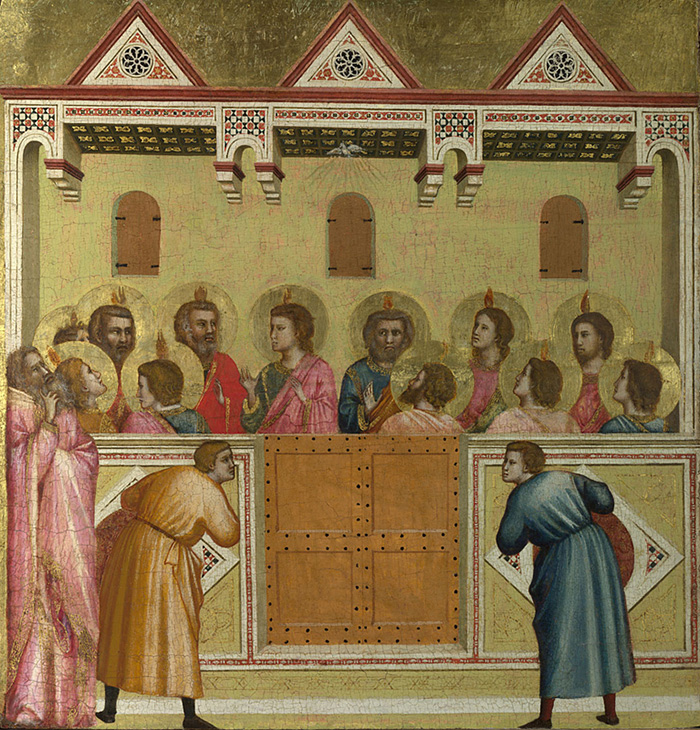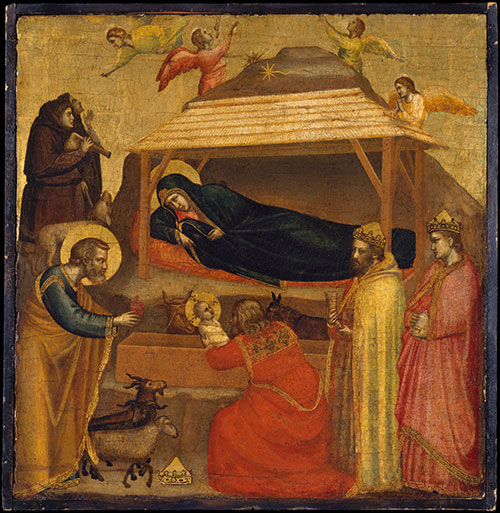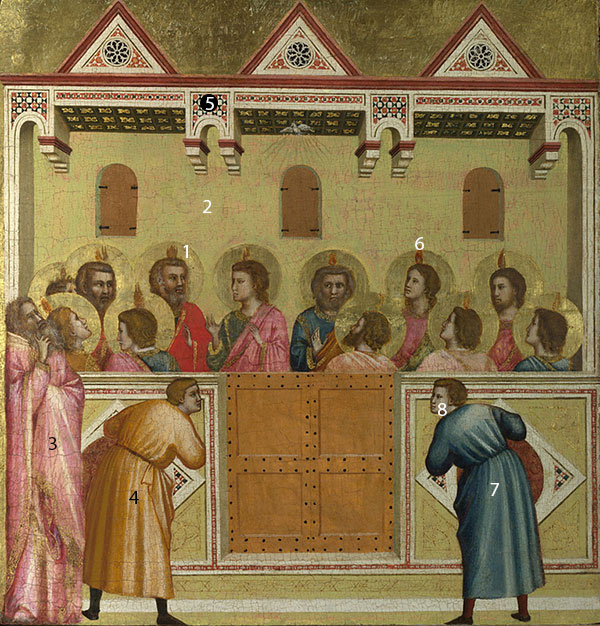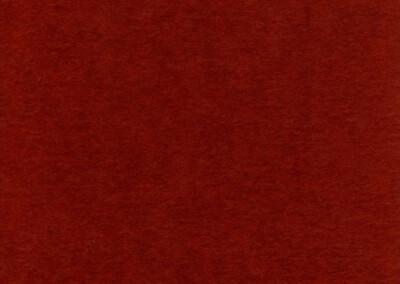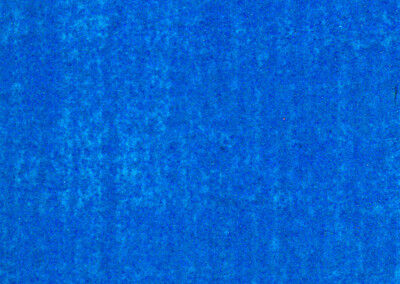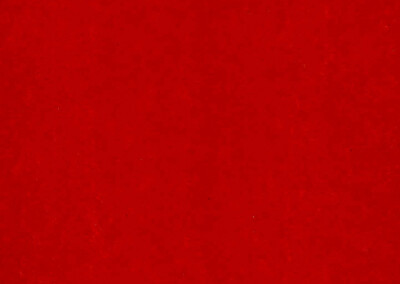Giotto, Pentecost
probably about 1310-18Giotto, Pentecost
probably about 1310-18Paintings sorted by Historical period | Painter | Subject matter | Pigments used
Overview
Medium: egg tempera
Support: poplar
Size: 45.5 x 44 cm
National Gallery London
Inventory number: NG5360
‘The Pentecost’ is one of seven panels depicting episodes in the life of Jesus. The other six panels can be found below under ‘Related paintings’ on this website. The extent to which Giotto himself painted ‘The Pentecost’ is not known and it is assumed that Giotto designed the altar and painted some of the figures, while other parts were painted by his assistants (1).
(1) David Bomford, Jill Dunkerton, Dillian Gordon, Ashok Roy, Jo Kirby, National Gallery Catalogues, The Italian Paintings before 1400′, London 2011, pp. 64–71.
Biblical Story
Acts 2:1-13
New International Version (NIV)
The Holy Spirit Comes at Pentecost
2
When the day of Pentecost came, they were all together in one place. (2) Suddenly a sound like the blowing of a violent wind came from heaven and filled the whole house where they were sitting. (3) They saw what seemed to be tongues of fire that separated and came to rest on each of them. (4) All of them were filled with the Holy Spirit and began to speak in other tongues [a] as the Spirit enabled them.
(5) Now there were staying in Jerusalem God-fearing Jews from every nation under heaven. (6) When they heard this sound, a crowd came together in bewilderment, because each one heard their own language being spoken. (7) Utterly amazed, they asked: “Aren’t all these who are speaking Galileans? (8) Then how is it that each of us hears them in our native language (9) Parthians, Medes and Elamites; residents of Mesopotamia, Judea and Cappadocia, Pontusand Asia, [b] (10) Phrygia and Pamphylia, Egypt and the parts of Libya near Cyrene; visitors from Rome (11) (both Jews and converts to Judaism); Cretans and Arabs—we hear them declaring the wonders of God in our own tongues!” (12) Amazed and perplexed, they asked one another, “What does this mean?”
(13) Some, however, made fun of them and said, “They have had too much wine.”
Footnotes:
[a] Acts 2:4 Or languages; also in verse 11
[b] Acts 2:9 That is, the Roman province by that name
Related Paintings
The ‘Pentecost’ is one of the series of seven similar panels depicting episodes from the life of Jesus. The other six panels are shown below
Giotto di Bondone, Nativity with the Epiphany (The Adoration of the Magi), possibly ca 1320
Image courtesy of The Metropolitan Museum of Art, New York
Giotto di Bondone, The Presentation, possibly ca 1320
Isabella Stewart Gardner Museum, Boston
Giotto di Bondone, The Last Supper, ca 1306
Alte Pinakothek, Munich

Giotto di Bondone, The Crucifixion, ca 1320
Alte Pinakothek, Munich

Giotto di Bondone, The Entombment, ca 1320
I Tatti, Berenson Collection, Settignano

Giotto di Bondone, The Descent into Limbo, ca 1320
Alte Pinakothek, Munich
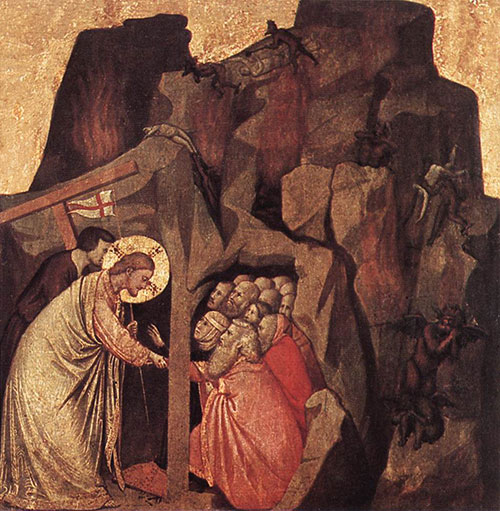
Pigments
Pigment Analysis
The following pigment analysis is based on the technical examination of the painting in the National Gallery London (1).
1 Halos of the Apostles: gilding with gold leaf over a thin layer of green earth. This method of gilding is rather unusual as normally painters in this period would rather use red bole (clay containing iron oxide) as an underlayer for the gold.
2 Greenish-yellow background wall: lower layer consists of red ochre and white while the upper layer contains lead-tin-yellow.
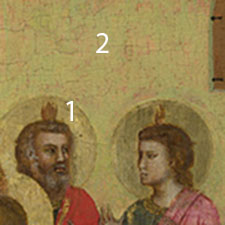
3 The pink drapery of the figure on the left: three layers of a mixture of lead white and red lake covered with mordant gilding. The mordant consists of lead white and drying oil.

4 Orange robe of the foreground figure on the left: orange ochre with highlights in yellow ochre and an unidentified yellow lake.
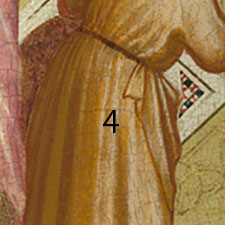
5 The mosaic pattern of the architecture on top: thick layers of azurite in the dark blue parts and vermilion over a layer of lead white in the red parts of the mosaic.

6 Orange-red flames over the heads of the Apostles: most probably a very rare red pigment, dragon’s blood, produced from resinous exudations of the tree with the same name and also from other species.
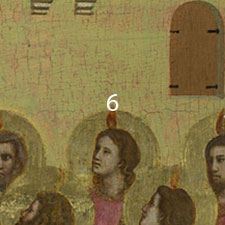
7 The blue-green drapery of the figure on the right: underlayer of azurite and lead white overglazed with azurite and a little ultramarine.
8 Flesh colour: the first layer is a mixture of lead white and vermilion with small amounts of black. The darker details of the eyes, noses, and mouths are painted in brown tones.

References
(1) David Bomford, Jill Dunkerton, Dillian Gordon, Ashok Roy, Jo Kirby, National Gallery Catalogues, The Italian Paintings before 1400′, London 2011, pp. 64–71.
Pigments Used in This Painting
Resources
Videos
Video: 'Giotto, Pentecost' by St. Mark's Kennington
Video: 'Giotto: A collection of 131 works (HD)' by LearnFromMasters
Video: 'Giotto: Colors of Medieval Europe' by Faces of Ancient Europe
Publications and Websites
Publications
(1) David Bomford, Jill Dunkerton, Dillian Gordon, Ashok Roy, Jo Kirby, National Gallery Catalogues, The Italian Paintings before 1400′, London 2011, pp. 64–71.
(2) Billinge, R., Gordon, D. ‘The Use of Gilded Tin in Giotto’s “Pentecost“‘. National Gallery Technical Bulletin Vol 29, pp 76–80. Available as pdf.

